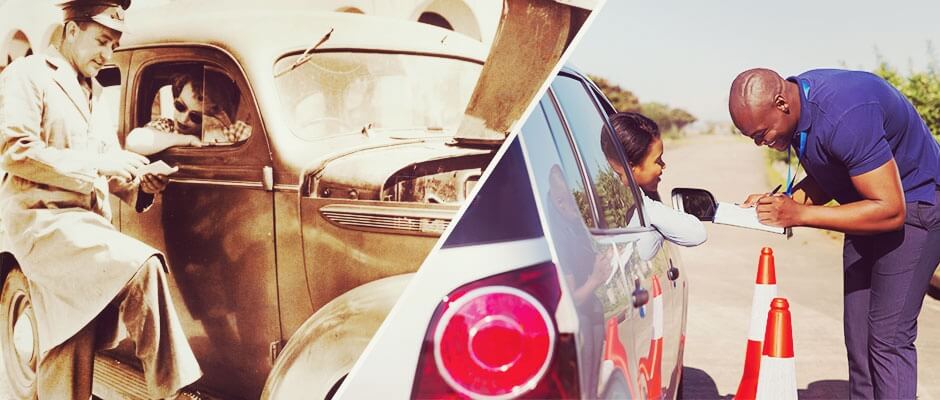80 years of the car driving test in Britain
1st June 2015 marked the 80th anniversary of the driving test. Formalised testing was first introduced in 1935, with the driving test being phased in, before becoming compulsory from 1st June. The test focused on safety and aimed to reduce the high accident rate in Britain.
The first person to pass their driving test in Britain was Mr RE Beere of Kensington Hall Gardens, London W14 on 16th March 1935. Mr Beere paid seven shillings and sixpence, the equivalent of about £23 today.
What was the driving test like in 1935?
The driving test in 1935 wasn’t much different to how it is today. There was no theory test, but learner drivers were quizzed on their knowledge of the Highway Code before the practical exam started. A reporter from Autocar magazine was sent along to try out the test in 1935 and report back to their readers on what to expect. The 1930s driving test included an emergency stop, hill start, three-point turn, vehicle and hand signalling, parking and number plate reading. The driving test lasted around 30 minutes and, according to the DVSA, the pass rate was 63%.
“The test is not easy,” said Autocar. “A very good knowledge of the Highway Code seems to be necessary, and it must be applied to one’s driving. Captain Stuart [the examiner] stressed that the main requirement in the test was safety.
“How the driver treats his car does not matter so much. Crashing the gears will not influence the tester, so long as it does not affect safety.”
The below video shows a film created in 1935 to put learner drivers’ minds at ease and give them more information about the new driving test.
The driving test in 2015
Today, the car driving test in the UK is made up of two parts; the theory test, which was introduced in 1996, and the practical test. During your practical driving test you’ll have to read a number plate to test your eyesight, answer a couple of vehicle safety questions and then be tested on your driving ability, including ten minutes of independent driving where you’ll have to follow either traffic signs, some verbal directions, or a bit of both.
The pass rate is lower now than it was in 1935. According to Gov.uk, in 2013 to 2014 the pass rate was 47.1%. Some of the main reasons why people didn’t pass included observation at junctions, use of mirrors, and steering. The 2015 driving test is considerably more than seven shillings and sixpence; the car theory test costs £25 and the car practical test costs £62 on weekdays and £75 on evenings, weekends and bank holidays.
What has introducing driving tests meant for Britain?
The introduction of the driving test in 1935 means that British roads are now much safer, although the safety of modern cars is also a contributing factor. In 1935, there were only 2.4 million vehicles in use yet 7,343 people were killed on Britain’s roads. Fast-forward to 2008 and there were 26.5 million vehicles on the road, but the number of fatalities was 2,538 (Government figures). This is still much too high, but it is nearly three times less than 80 years ago.
More changes ahead?
Even with these improvements in road safety, the Association of British Insurers (ABI) wants to make more changes to the UK driving test to bring the country into line with nations such as the USA, Australia and New Zealand.
James Dalton, the ABI’s Director of General Insurance Policy, told the Actuarial Post:
“Car crashes remain the biggest cause of accidental death among young people, and more than 20 per cent of all road deaths can be traced back to young drivers. Evidence from overseas indicates these numbers could be drastically improved with the introduction of graduated driving licences.
“Passing your driving test is only the start of becoming a safe driver. We want to see a minimum one year learning period for under 25s and then an initial period of 6 months when there would be limits on the number of passengers which could be carried. Better driver training would reduce collisions, bring down motor premiums and, most importantly, save hundreds of lives.”
